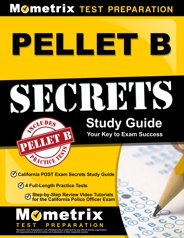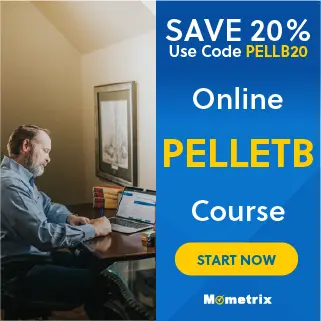If you need help studying for the California POST (PELLETB) exam or just want some more information about what the test is like, you’ve come to the right place.
Click below to take a free PELLETB practice test!
What’s on the Exam?
There are between 65 and 78 questions on the exam, which are grouped into two main sections, and the time limit is 2.5 hours.
Let’s take a closer look at each section of the exam:
1. Writing Ability
45-54 questions
For Clarity questions, you’ll be given a selection of sentences. Your job is to figure out which sentence is most clearly and correctly written. You’ll just be looking for common writing errors.
Spelling
For Spelling questions, you’ll be given a sentence that has one word removed. Your job is to determine which of the four provided answer choices best fills in the blank.
Vocabulary
For Vocabulary questions, you’ll be given a sentence that has one word underlined. Your job is to determine which of the four provided answer choices is the most accurate definition or synonym of the underlined word.
2. Reading Ability
20-24 questions
For the Reading Comprehension section, you’ll be given a set of passages to read, and each passage is followed by a set of related questions. The passages can be anywhere from a single paragraph to a whole page in length.
How to Register
To register for the test, you’ll need to get in touch with the law enforcement agency or basic training academy in your area. They’ll let you know if they administer the test and what details they need from you to get you registered.
The good news is that the exam is free!
PELLETB Study Guide
Get practice questions, detailed study lessons, and complex subjects broken down into easily understandable concepts.
 Get Your Study Guide
Get Your Study Guide
Exam Scores
The PELLETB turns your number of correct answers (your raw score) into a T-score. A T-score is a type of standardized score that shows how your results compare to others, using a bell-shaped curve to show below-average, average, and above-average performance.
To pass the exam, you need to get at least an average score. T-scores range from 1 to 100, and a score of 50 is considered average. After grading, there’s a ten-point range that still counts as average. So, if your T-score is between 40 and 60, it’s considered average.
Online PELLETB Prep Course
If you want to be fully prepared, Mometrix offers an online PELLETB prep course. The course is designed to provide you with any and every resource you might want while studying. The PELLETB course includes:
The PELLETB prep course is designed to help any learner get everything they need to prepare for their PELLETB exam. Click below to check it out!
FAQs
How many questions are on the PELLETB exam?
The exam contains 65-78 questions.
What is the time limit for the PELLETB exam?
The exam is timed at 2.5 hours.
What is the passing score for the PELLETB exam?
Each academy has its own scoring requirements.
How much does the PELLETB exam cost?
The exam is free.


 PELLETB
PELLETB
